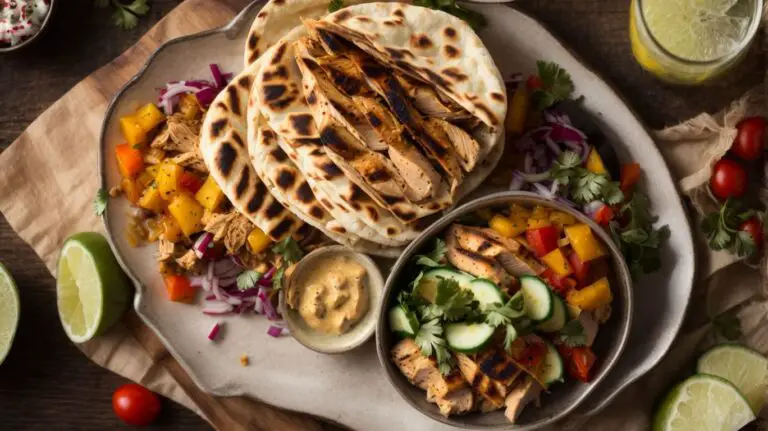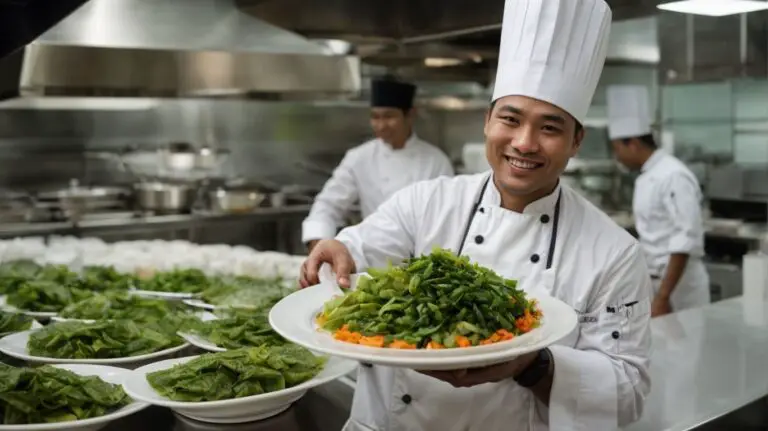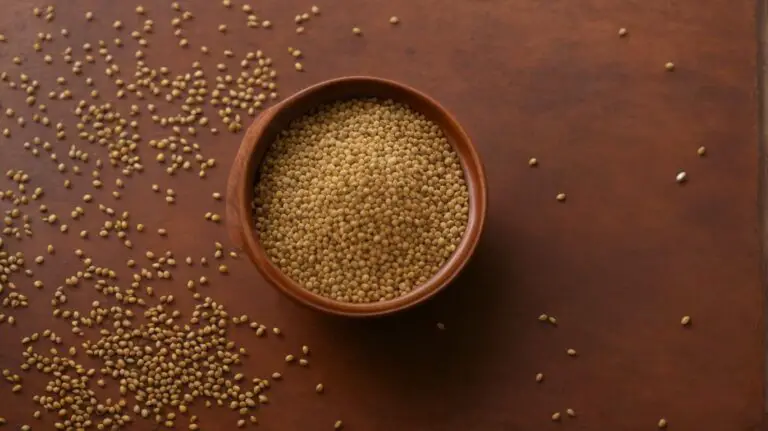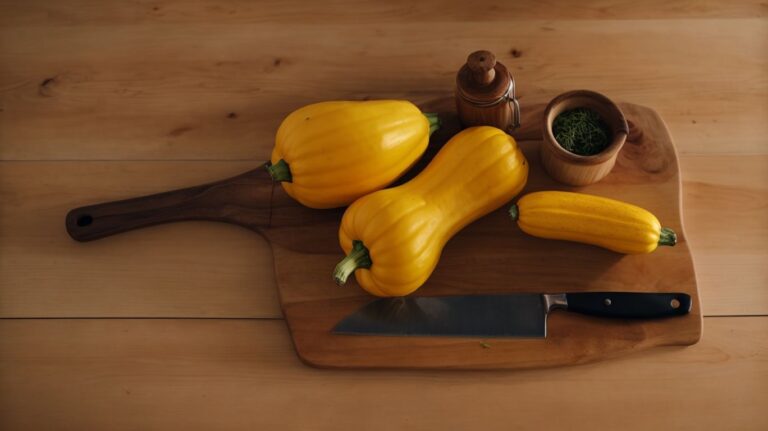How to Cook Steak in Oven?
Are you looking to elevate your steak cooking game?
Explore the best cuts for oven cooking, different grades and types of steak, seasoning and preparation, various cooking methods, temperature and time guidelines, and tips for achieving a perfectly cooked steak in the oven.
Discover serving and pairing suggestions to complement your delicious steak. Get expert advice on cooking the perfect steak in the oven!
Key Takeaways:
What Type of Steak Should You Use?
Choosing the right type of steak is crucial for a successful cooking experience.
Regarding selecting a steak, the decision can significantly impact the final dish’s taste and texture. Factors such as the cut of the meat play a crucial role in determining how the steak should be cooked. Different cuts, like ribeye, New York strip, or filet mignon, vary in tenderness, marbling, and flavor profile, making them more suitable for specific cooking methods.
The quality of the steak, including factors like grading and aging, can enhance the overall dining experience. For example, USDA Prime steaks are known for their superior marbling and tenderness, ideal for grilling or pan-searing to perfection.
Considering your cooking preferences, whether you prefer a rare, medium-rare, or well-done steak, also influences the type of steak you should choose. Each steak cut reacts differently to various cooking techniques, ensuring that understanding these nuances can elevate your culinary skills to new heights.
What Are the Best Cuts for Oven Cooking?
Regarding oven cooking, certain steak cuts shine due to their tenderness and flavor profile.
One of the most popular choices for oven cooking is the ribeye steak. Known for its rich marbling, the ribeye offers a juiciness and robust flavor when cooked in the oven.
The filet mignon is favored for its tenderness, making it a great candidate for quick and high-heat oven cooking methods.
For those seeking a leaner option, flank steak is a versatile cut that can be tenderized through marinating before being cooked in the oven. On the other hand, skirt steak boasts a bold flavor that pairs well with marinades and can be cooked to perfection in the oven.
What Are the Different Grades of Steak?
Understanding the various grades of steak is essential for achieving the desired cooking results.
Regarding steak grading, there are three main categories that you will often encounter at butcher shops or on menus: Prime, Choice, and Select.
- Prime grade steaks are known for their exceptional marbling, tenderness, and flavor, making them the top choice for steak connoisseurs. These cuts are perfect for grilling or broiling to medium-rare or medium doneness.
- Choice grade steaks are still of high quality, with good marbling and tenderness, but slightly less than Prime. They are versatile and great for grilling or pan-searing.
- Select grade steaks have the least amount of marbling, making them leaner and less tender. They are best suited for marinating and cooking to medium doneness to avoid toughness.
Each grade offers a different balance of flavor, tenderness, and juiciness, so choosing the right one depends on personal preferences and cooking methods.
What Are the Different Types of Steak?
Steak lovers appreciate the diverse range of steak types available for culinary exploration.
From the opulent tenderness of filet mignon to the robust marbling of ribeye, each cut offers a distinct texture and flavor profile. The flank steak, prized for its intense beefy taste, benefits from marinating before grilling, while the thin skirt steak is perfect for quick cooking at high heat. Understanding the nuances of each cut is crucial for achieving the desired level of doneness, whether it’s a rare, medium-rare, or well-done steak. Embracing the art of seasoning and proper cooking techniques elevates the dining experience for any steak connoisseur.
Preparing the Steak for Cooking
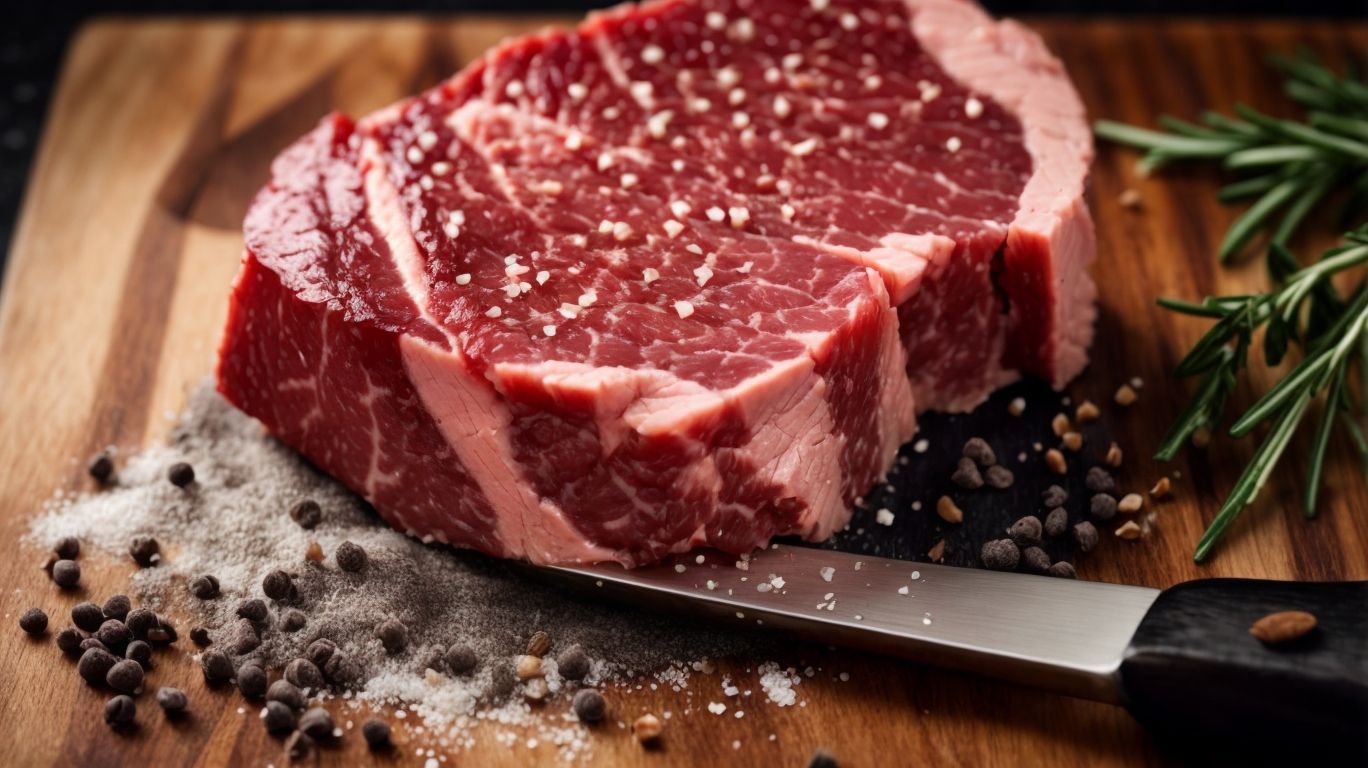
Credits: Poormet.Com – Wayne Rodriguez
Properly preparing the steak before cooking is key to enhancing its flavor and texture.
When preparing to cook a steak, it’s crucial to allow it to come to room temperature before it hits the heat. This step ensures even cooking throughout the meat, preventing a cold center and overcooked exterior.
The choice of cooking vessel is also pivotal – opt for a heavy-bottomed pan or skillet to achieve a beautiful sear and lock in the juices.
Regarding seasoning, a simple combination of salt and pepper can go a long way in enhancing the natural flavors of the steak. Make sure to season generously, as some of the seasoning will be lost during cooking.
How to Season the Steak?
Seasoning the steak correctly can elevate its taste and create a flavorful crust during cooking.
One popular method to season a steak is to generously sprinkle both sides with a mixture of kosher salt and freshly ground black pepper to enhance its natural flavors. Incorporating various herbs like rosemary, thyme, or oregano can add depth and aroma to the meat. Experimenting with different spices such as paprika, cumin, or chili powder can introduce unique flavor profiles.
Ensuring the steak is thoroughly seasoned before cooking helps to form a deliciously caramelized sear on the outside while keeping the meat juicy and flavorful on the inside. To further enhance the taste, some chefs recommend basting the steak with butter or a blend of seasonings during the cooking process for added richness and complexity.
What Are Some Recommended Marinades for Steak?
Marinades offer a fantastic way to infuse flavor and tenderness into steak before cooking.
Marinades can transform a simple cut of steak into a mouthwatering dish bursting with flavor. A classic marinade combines oil, acid, and seasonings to help tenderize the meat and add depth to its taste. Common ingredients like soy sauce, Worcestershire sauce, garlic, and fresh herbs can work wonders on steak, enhancing its natural richness.
Experimenting with different marinades allows you to explore a variety of flavors. For a tangy kick, try a balsamic vinegar-based marinade, which adds a pleasant sweetness to balance the savory notes of the steak. Alternatively, a citrus-infused marinade with lemon or lime juice can provide a refreshing zing that cuts through the richness of the meat.
How to Cook Steak in the Oven
Mastering the art of cooking steak in the oven requires precision and attention to detail.
One crucial step in achieving the perfect oven-cooked steak is setting the temperature correctly. Preheat your oven to 450°F (232°C) to ensure a high enough heat for the steak to cook evenly and develop a flavorful crust. Remember, a hot oven is key to getting that ideal sear on the outside while keeping the inside juicy.
- For cooking durations, a general rule of thumb is to cook a 1-inch thick steak for about 15-20 minutes for medium-rare, 20-25 minutes for medium, and around 30 minutes for well-done.
Using a meat thermometer is highly recommended to monitor the internal temperature. Insert the thermometer into the thickest part of the steak, and for medium-rare, aim for 130-135°F (54-57°C), 140-145°F (60-63°C) for medium, and 150-155°F (66-68°C) for well-done.
What Are the Different Cooking Methods for Steak in the Oven?
There are several cooking methods that can be employed when preparing steak in the oven.
Regarding cooking steak in the oven, broiling is a popular technique that involves exposing the steak to high heat from above. This method is great for achieving a nice crust on the exterior while keeping the inside juicy and tender. Baking, on the other hand, is a slower method that allows for more even cooking throughout the steak. Butter can be used for basting the steak during the cooking process to add richness and flavor.
What Temperature and Time Should You Cook the Steak?
Achieving the perfect steak requires understanding the ideal temperature and cooking duration for each desired level of doneness.
For a rare steak, aim for an internal temperature of about 125°F (51°C) and cook for 3-4 minutes on each side for a 1-inch (2.5 cm) thick cut. If you prefer a medium-rare steak, cook it until the internal temperature reaches 135°F (57°C) and grill for about 4-5 minutes per side. Those who enjoy a medium steak should cook it to 145°F (63°C) internally and grill for 5-6 minutes per side. For a medium-well steak, cook to 155°F (68°C) and grill for 6-7 minutes on each side. And for a well-done steak, aim for an internal temperature of 160°F (71°C) and grill for around 8-10 minutes per side.
How to Check the Doneness of the Steak?
Checking the doneness of the steak ensures a delicious and perfectly cooked outcome.
One of the most reliable methods for checking steak doneness is by using a meat thermometer. Insert the thermometer into the thickest part of the steak without touching the bone for an accurate reading. Different levels of doneness are indicated by specific temperatures; for example, medium-rare is around 130-135°F. Visual cues such as color and firmness can also help determine if the steak is cooked to your desired preference.
A perfectly cooked steak should have a juicy and slightly pink center for medium-rare or a warmer pink center for medium. By mastering these techniques, you can impress your guests with a perfectly grilled steak every time.
Tips for Perfectly Cooked Steak in the Oven
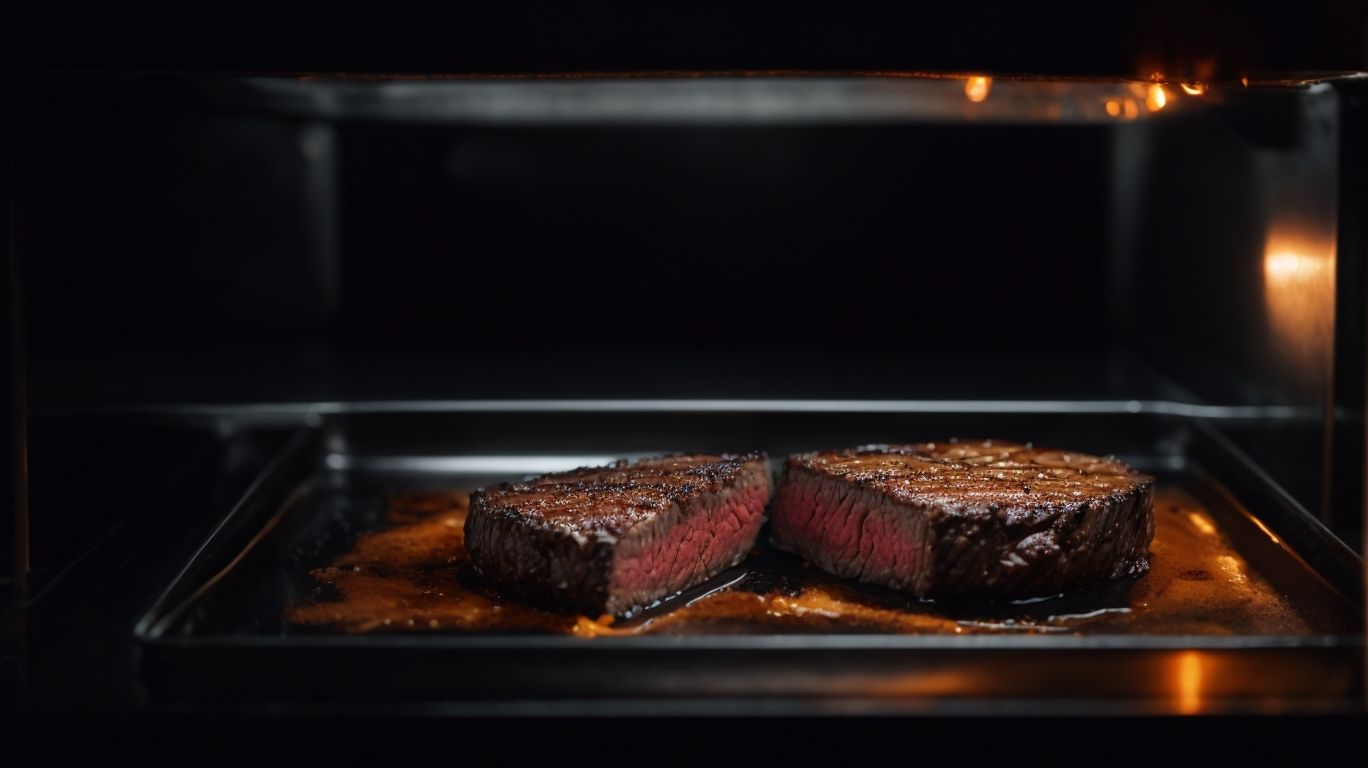
Credits: Poormet.Com – Scott Mitchell
Achieving a perfectly cooked steak in the oven involves a blend of techniques to ensure a delicious and flavorful outcome.
One key aspect to consider when preparing steak in the oven is the choice of seasoning. Seasoning your steak generously with salt, pepper, and your favorite herbs or spices not only enhances the flavor but also helps in creating a well-developed crust. Allowing the steak to sit at room temperature for about 30 minutes before cooking helps to ensure even cooking throughout the meat.
How to Get a Perfectly Crispy Crust?
Creating a crispy crust on steak is a culinary delight that enhances its overall taste and texture.
When aiming to achieve that perfect sear on your steak, using a cast-iron skillet plays a crucial role. The high heat retention and even distribution of a cast-iron skillet ensure a uniform caramelization on the surface of the meat, resulting in a delectable crust.
To enhance the flavors, consider seasoning your steak generously with herbs and spices before searing. This not only adds depth to the taste but also forms a savory crust that locks in all the juices.
It is essential to preheat the skillet thoroughly before placing the steak to ensure a sizzling sear. Once the steak is in the pan, refrain from moving it around too much; allowing it to develop that coveted crust.
Pairing the searing technique with a butter basting towards the end can further elevate the flavors and textures of the steak, giving it a glossy finish. Remember, achieving a crispy crust on steak is all about attention to detail and the right techniques that bring out the best in this meaty masterpiece.
How to Keep the Steak Juicy and Tender?
Maintaining the juiciness and tenderness of steak is essential for a delightful dining experience.
One effective strategy to ensure a juicy and tender steak is starting with a steak at room temperature. This allows the meat to cook evenly, preventing a tough exterior with a raw interior.
Mastering proper grilling techniques can make a significant difference. Whether you prefer charcoal or gas, controlling the temperature is key. Searing your steak over high heat to lock in juices before finishing at a lower heat can result in a perfect doneness level. Experimenting with marinades, rubs, or seasonings can also enhance the flavor and juiciness of the steak.
Serving and Pairing Suggestions
Pairing steak with complementary side dishes and flavorful marinades enhances the overall dining experience.
Regarding choosing the ideal side dishes to accompany your steak, options like garlic mashed potatoes, grilled asparagus, or a classic Caesar salad can provide a balance of textures and flavors. These sides offer a mix of creamy, crunchy, and refreshing elements that complement the richness of the steak.
- For marinades, consider opting for a bold red wine marinade with garlic, rosemary, and balsamic vinegar to intensify the flavors of the steak.
- An herb-infused chimichurri sauce can also be a delightful accompaniment, adding a fresh and zesty dimension to each bite.
- Experimenting with different marinades and side dishes can take your steak dinner to a whole new level, offering a variety of taste experiences to savor.
What Are Some Recommended Side Dishes for Steak?
Selecting the right side dishes can enhance the flavors and textures of steak, creating a harmonious culinary experience.
Regarding pairing side dishes with steak, the options are plentiful and diverse, catering to a wide range of preferences. Buttery mashed potatoes make for a classic choice, offering a creamy and indulgent contrast to the hearty texture of a well-cooked steak. A fresh garden salad with a tangy vinaigrette can provide a refreshing and lighter accompaniment, balancing the richness of the meat. For those looking for a more robust side dish, roasted vegetables seasoned with herbs and garlic can add depth and earthiness to the meal.
What Are Some Recommended Wine Pairings for Steak?
Pairing steak with the right wine can elevate the dining experience by harmonizing flavors and enhancing the meal’s enjoyment.
This is crucial as different steak cuts and preparations demand specific wine characteristics to create a harmonious match. For a bold ribeye steak, opt for a Cabernet Sauvignon with its robust tannins that complement the rich marbling and intense flavors of the meat. Conversely, a delicate filet mignon pairs beautifully with a lighter-bodied Pinot Noir to enhance its tenderness and subtle taste. For grilled sirloin, consider a Merlot which offers a balance of fruitiness and structure to complement the steak’s savory notes.
Frequently Asked Questions
How to Cook Steak in Oven?
What type of steak should I use when cooking in the oven?
It is recommended to use a thicker cut of steak, such as ribeye or sirloin, for cooking in the oven.
How to Cook Steak in Oven?
What is the best temperature to cook steak in the oven?
The ideal temperature for cooking steak in the oven is 425°F (218°C).
How to Cook Steak in Oven?
How long should I cook my steak in the oven?
The cooking time will vary depending on the thickness of your steak. A general guideline is to cook for 10-12 minutes for medium rare, 12-14 minutes for medium, and 14-16 minutes for medium well.
How to Cook Steak in Oven?
Should I preheat the oven before cooking the steak?
Yes, it is important to preheat the oven to ensure even cooking and to achieve a nice sear on the steak.
How to Cook Steak in Oven?
Do I need to oil the pan when cooking steak in the oven?
No, you do not need to oil the pan when cooking steak in the oven. The steak will produce its own natural juices which will prevent sticking.
How to Cook Steak in Oven?
Can I use a meat thermometer to check for doneness when cooking steak in the oven?
Yes, using a meat thermometer is a reliable way to ensure your steak is cooked to your desired level of doneness. Insert the thermometer into the thickest part of the steak, and the internal temperature should reach 145°F (63°C) for medium rare, or 160°F (71°C) for medium.


